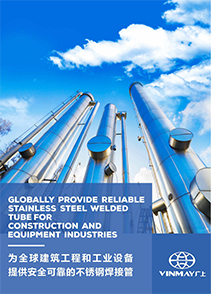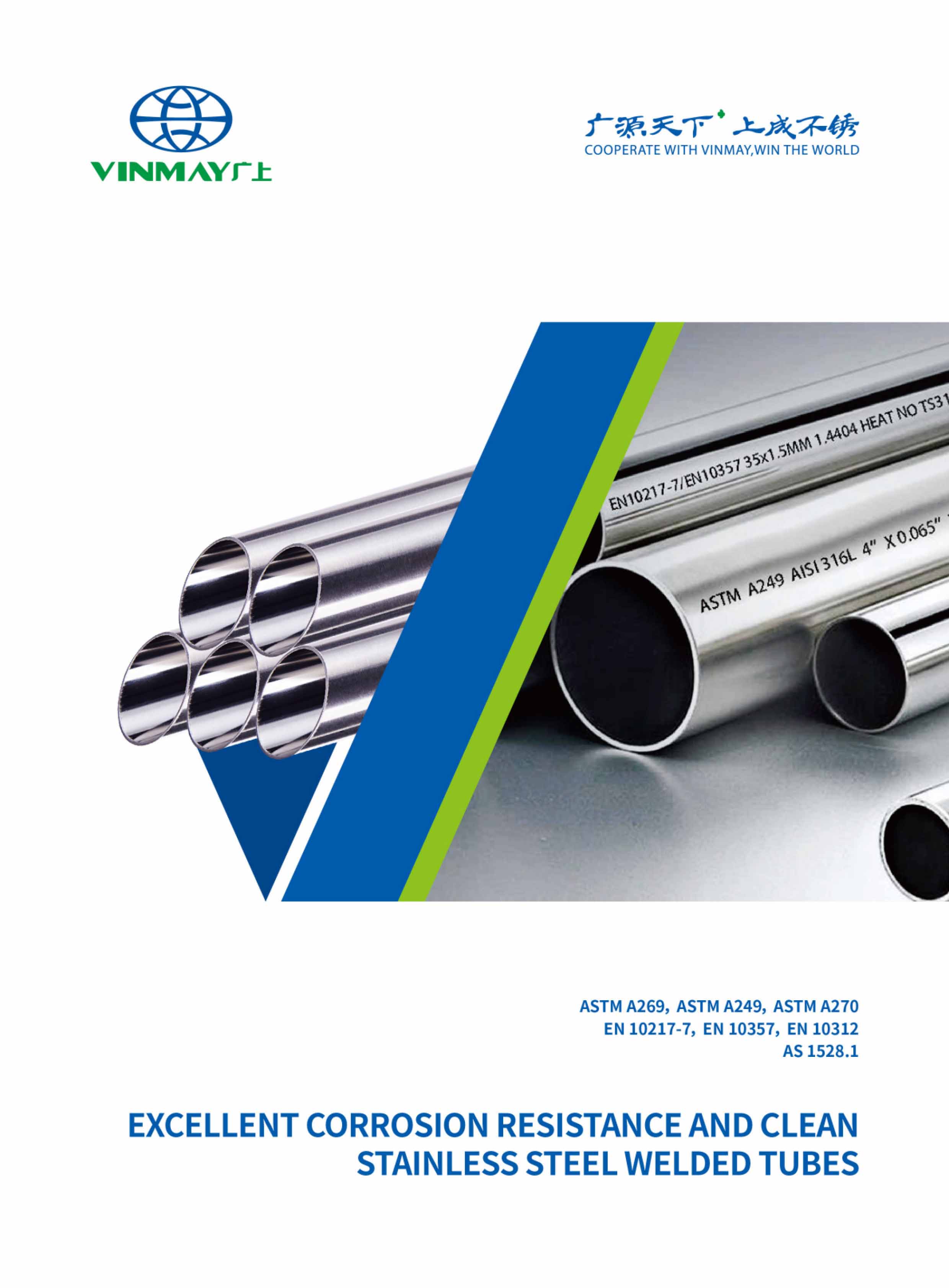The comparison between stainless steel tube 304 vs 316 is a critical topic in stainless steel tube material selection for various industries. While 304 is often favored for its affordability and general corrosion resistance, 316 presents superior performance in harsher environments due to its molybdenum content. Understanding the distinct properties of stainless steel tube 304 vs 316 can greatly impact application success and cost-effectiveness. However, the decision process is not as straightforward as it may seem; specific project requirements and environmental factors play pivotal roles in this choice. What nuances might influence your decision further?
Stainless steel is a corrosion-resistant alloy primarily composed of iron, chromium, and varying amounts of other elements, which enhance its mechanical and physical properties for diverse industrial applications. The alloy composition is critical, as the addition of chromium (at least 10.5%) forms a passive layer that protects the surface from environmental factors. This unique feature grants stainless steel its renowned corrosion resistance, making it suitable for environments where traditional metals would fail.
Manufacturing processes for stainless steel tube include casting, forging, and machining, each tailored to achieve specific material characteristics. These methods guarantee that the final product meets stringent quality standards required in industries ranging from construction to medical equipment.

When comparing the popularity of stainless steel tube 304 vs 316 , the key differences lie in their chemical compositions and resultant properties, particularly regarding corrosion resistance and intended applications.
304 stainless steel is widely favored for its excellent corrosion resistance and formability, making it suitable for a range of industry applications, including food processing and architectural elements. However, its performance in chloride-rich environments is limited.
In contrast, 316 Stainless incorporates molybdenum, enhancing its resistance to pitting and crevice corrosion, particularly in marine and chemical processing environments. This characteristic has led to its preference in industries requiring high durability, such as pharmaceuticals and offshore applications.
Cost comparison also plays a significant role in their popularity; 304 Stainless is generally more affordable, attracting cost-conscious projects, while 316 Stainless, though more expensive, is justified by its superior performance in harsh conditions.
Ultimately, the choice of stainless steel tube 304 vs 316 involves a balance of corrosion resistance, cost, and specific industry applications, ensuring that professionals can select the material best suited to their operational needs.
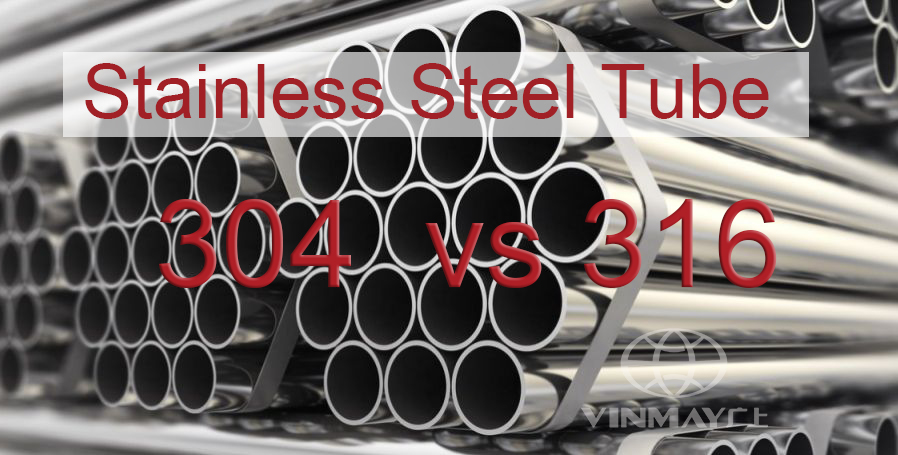
The categorization of grade of stainless steel pipe, such as 304 and 316, is primarily based on their chemical composition, mechanical properties, and suitability for specific applications in various industries. Stainless steel categories are defined through established grade classification methods, which consider elemental alloy content and performance metrics, particularly regarding corrosion resistance.
Grade 304 is recognized for its versatility and is commonly utilized in food processing, kitchen equipment, and chemical containers due to its excellent formability and moderate corrosion resistance.
In contrast, grade 316 is distinguished by its enhanced corrosion resistance, attributed to the addition of molybdenum, making it ideal for marine environments and chemical processing applications.
These grades are further categorized based on their manufacturing processes, which influence factors such as strength, durability, and the ability to withstand extreme conditions.
Understanding these distinctions helps industries select the appropriate grade for their specific applications, ensuring peak performance and longevity of materials used in manufacturing processes.
304 stainless steel is characterized by its specific chemical composition, which greatly influences its physical and mechanical properties.
This alloy exhibits notable corrosion resistance and strength, making it suitable for a wide range of applications.
The life expectancy of 304 stainless steel is also quite impressive, typically ranging from 20 to 30 years or more, depending on the environment and conditions of use.
Understanding these properties is essential for engineers and designers when selecting materials for projects requiring durability and reliability.
304 stainless steel tube chemical composition
| Element | Composition |
|---|---|
| Chromium (Cr) | 18.0 – 20.0% |
| Nickel (Ni) | 8.0 – 10.5% |
| Carbon (C) | ≤ 0.08% |
| Manganese (Mn) | ≤ 2.0% |
| Silicon (Si) | ≤ 1.0% |
| Phosphorus (P) | ≤ 0.045% |
| Sulfur (S) | ≤ 0.03% |
Read More:
Characterized by its versatility, 304 stainless steel exhibits a unique combination of physical properties that contribute to its widespread use in various applications. This alloy is particularly renowned for its excellent corrosion resistance, which makes it suitable for environments prone to oxidation and exposure to various chemicals.
The following table summarizes key physical properties of 304 stainless steel:
| Property | Value | Importance |
| Density | 8.0 g/cm³ | Affects weight and structural design |
| Melting Point | 1,400 – 1,450°C | Critical for heat treatment processes |
| Thermal Conductivity | 16.2 W/m·K | Influences heat dissipation in applications |
| Electrical Resistivity | 0.072 x 10^-6 Ω·m | Important for electrical applications |
| Thermal Expansion | 17.2 x 10^-6 /K | Impacts material expansion under heat |
The mechanical properties of 304 stainless steel play an essential role in determining its suitability for various structural and mechanical applications. Known for its versatility, 304 stainless steel tube exhibits notable characteristics that contribute to its widespread use in industries demanding high-quality materials.
| Property | Value |
| Tensile Strength | 515 – 720 MPa |
| Yield Strength | 205 MPa |
| Elongation at Break | ≥ 40% |
| Hardness | ≤ 201 HBW (Brinell) |
304 stainless steel is widely utilized in various stainless steel pipe applications due to its excellent corrosion resistance and formability.
Applications of 304 stainless steel are extensive, owing to its excellent corrosion resistance, formability, and weldability, making it a preferred choice in various industries.
Common tube applications include:
Food and beverage processing
Equipment Chemical and Petrochemical
Industries Architectural and structural applications
These industry usages highlight the importance of material selection, ensuring ideal performance and longevity in diverse environments.
You may also like:
The Reality of 304 Stainless Steel Surgical Grade: Pros, Cons, and Critical Considerations
What Is Food Grade 304 Stainless Steel?
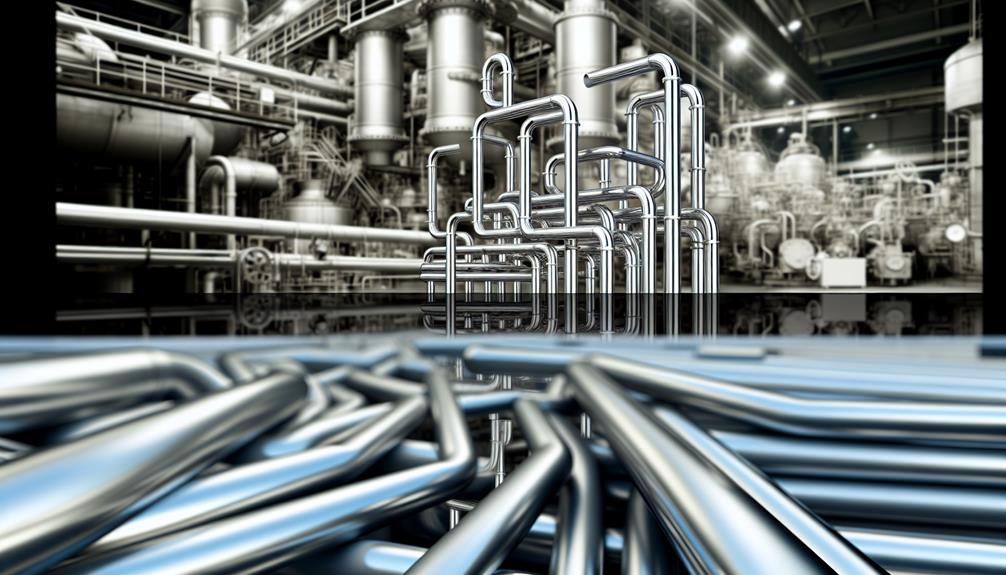
316 stainless steel tube properties is characterized by its unique chemical composition, which includes higher levels of molybdenum compared to 304 stainless steel. This enhanced composition significantly improves its corrosion resistance, especially in chloride environments.
Its physical and mechanical properties, such as tensile strength and ductility, make it suitable for a wide range of applications, from marine environments to chemical processing.
Understanding the benefits of 316 stainless steel tube is essential for selecting the appropriate material for demanding industrial applications.
| Element | Composition |
|---|---|
| Chromium (Cr) | 16.0 – 18.0% |
| Nickel (Ni) | 10.0 – 14.0% |
| Molybdenum (Mo) | 2.0 – 3.0% |
| Carbon (C) | ≤ 0.08% |
| Manganese (Mn) | ≤ 2.0% |
| Silicon (Si) | ≤ 1.0% |
| Phosphorus (P) | ≤ 0.045% |
| Sulfur (S) | ≤ 0.03% |
| Property | Value |
|---|---|
| Density | 8.0 g/cm³ |
| Melting Point | 1,375 – 1,400°C |
| Thermal Conductivity | 16.3 W/m·K |
| Electrical Resistivity | 0.074 x 10^-6 Ω·m |
| Thermal Expansion | 16.0 x 10^-6 /K |
| Property | Value |
|---|---|
| Tensile Strength | 485 – 700 MPa |
| Yield Strength | 170 MPa |
| Elongation at Break | ≥ 40% |
| Hardness | ≤ 217 HBW (Brinell) |
Additionally, 316 stainless steel demonstrates impressive impact toughness, ensuring durability in harsh environments.
Its hardness comparison to other grades reveals that, while it may not be the hardest option available, its balance of strength and ductility makes it a preferred choice in demanding applications.
The combination of these mechanical properties establishes 316 stainless steel as an essential material in industries requiring both strength and corrosion resistance.
316 stainless steel is renowned for its superior corrosion resistance, making it suitable for a variety of demanding environments.
Widely recognized for its exceptional corrosion resistance, 316 stainless steel is commonly employed in marine environments, chemical processing, and medical applications due to its ability to withstand harsh conditions and aggressive substances.
Its versatility extends to:
Industrial uses, including food processing used by stainless steel sanitary tube
Automotive applications , ensuring durability
Pharmaceutical manufacturing , meeting stringent hygiene standards
This makes 316 stainless steel an essential material across various sectors

Known for its superior corrosion resistance, 316 stainless steel is particularly advantageous in environments exposed to harsh chemicals and saline conditions. The alloying elements of molybdenum and nickel enhance its durability and strength, making it a preferred choice in marine applications and chemical processing.
The life expectancy of 316 stainless steel is notably high due to its exceptional corrosion resistance, particularly in harsh environments. This grade of stainless steel can last several decades, often exceeding 25 to 30 years, especially when used in marine or industrial settings.
In addition to its exceptional corrosion resistance, 316 stainless steel demonstrates favorable manufacturing processes, allowing for various fabrication methods while maintaining structural integrity. This versatility contributes to its cost-effectiveness in long-term applications, reducing the frequency of replacements and repairs.
However, it is essential to evaluate the environmental impact associated with its production and processing. The following table summarizes key properties and considerations:
| Property | Description |
|---|---|
| Corrosion Resistance | High, especially against chlorides |
| Alloying Elements | Contains molybdenum and nickel |
| Cost Effectiveness | Long lifespan reduces overall costs |
| Environmental Impact | Resource-intensive production processes |
The heat resistance of stainless steel grades 304 and 316 varies considerably, influencing their suitability for specific applications in environments exposed to elevated temperatures. Understanding the heat resistance factors of these alloys is essential for selecting the right material for high temperature applications.
A temperature stability comparison reveals that 316 stainless steel generally offers superior performance in extreme environments due to its higher molybdenum content, which enhances oxidation resistance differences. This is particularly relevant in applications that encounter corrosive elements at elevated temperatures.
Key considerations include:
Oxidation Resistance : 316 performs better under high-stress conditions, resisting scaling and oxidation.
Thermal Conductivity Analysis: 304 has higher thermal conductivity, making it suitable for applications requiring rapid heat transfer, but at the cost of lower overall heat resistance.
High Temperature Applications: 316 is preferred for prolonged exposure to higher temperatures, sustaining integrity where 304 may fail.
You may also like:
Stainless Steel Tube for Heat Exchanger
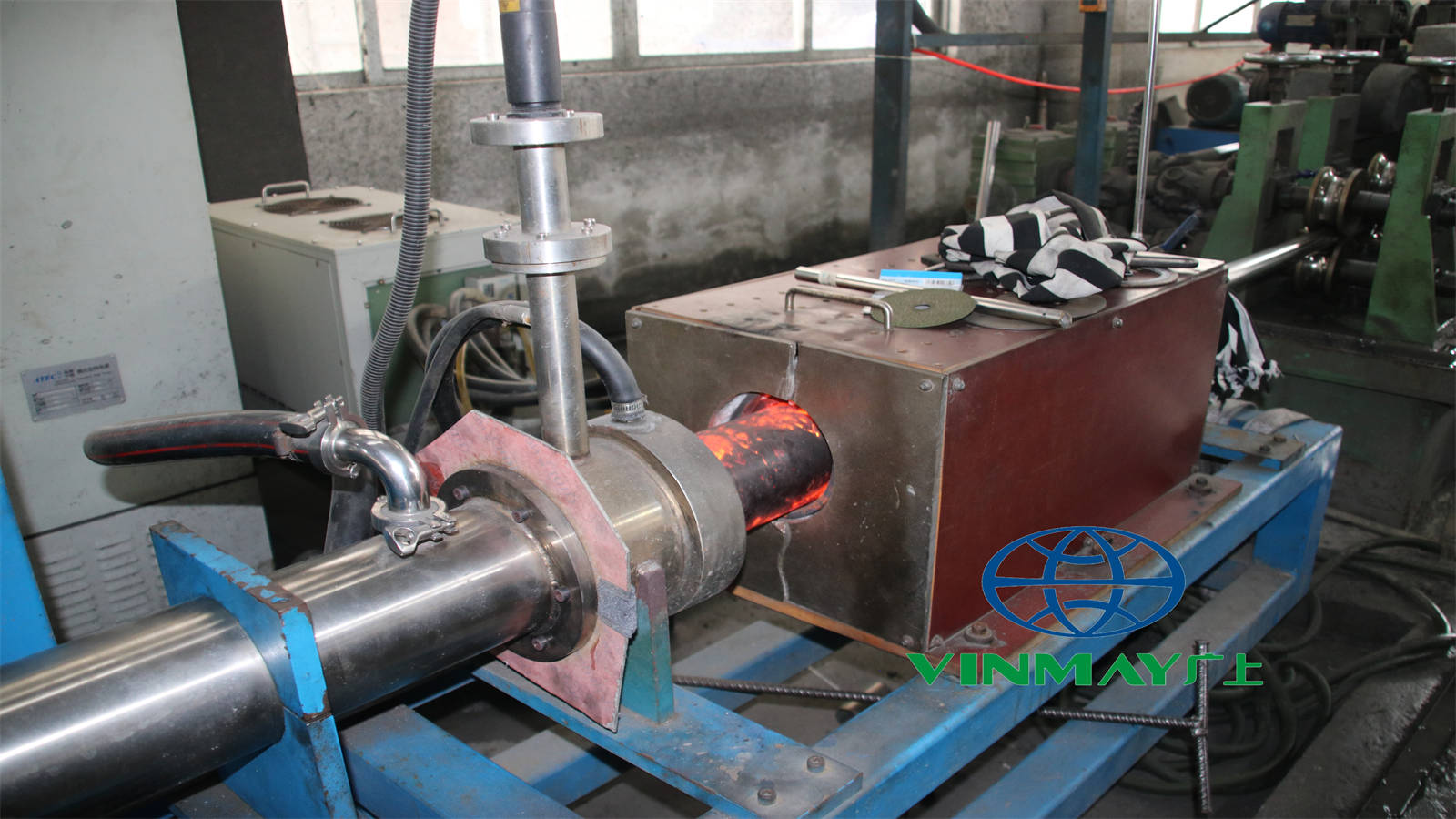
Price differences of stainless steel tube 304 vs 316 are primarily influenced by variations in alloy composition, manufacturing processes, and market demand for corrosion resistance and durability.
The addition of molybdenum in 316 stainless steel enhances its resistance to pitting and crevice corrosion, making it more expensive than 304. Price trends indicate that as market demand for high-performance materials grows, particularly in industries such as marine and chemical processing, the cost of 316 stainless steel can greatly rise.
Manufacturing costs also play a vital role in determining the price difference. The production of 316 stainless steel often involves more complex processes, which can impact overall supply chain dynamics.
Regional pricing variations may arise due to differences in local market conditions, availability of raw materials, and transportation costs. As global supply chains face fluctuations, these factors can further influence the pricing landscape for both grades.
Ultimately, understanding the price differences of stainless steel tube 304 vs 316 is essential for making informed material selection decisions, ensuring that the chosen alloy aligns with project requirements while remaining economically viable.
You may also like:
Deciphering the Dynamics: Unraveling Stainless Steel Round Tube Prices
When comparing stainless steel tube 304 vs 316 , several critical factors such as corrosion resistance, mechanical properties, and application suitability must be thoroughly evaluated to determine which alloy is superior for specific environments.
Corrosion Resistance: 316 stainless steel exhibits superior corrosion resistance, particularly in chloride environments, making it ideal for marine applications. Conversely, 304 stainless steel is less resistant, which can lead to potential degradation in similar settings.
Cost Effectiveness: 304 stainless steel is generally more cost-effective, often making it the preferred choice for applications where extreme corrosion resistance is not critical. This advantage allows for broader accessibility in various industries.
Application Suitability: The suitability of each alloy varies; 304 stainless steel is excellent for kitchen equipment and food processing, while 316 is preferred for pharmaceuticals and coastal environments due to its enhanced durability.
Selecting 304 stainless steel over 316 is advisable in applications where moderate corrosion resistance suffices, particularly in environments that are not exposed to chloride or harsh chemicals. The 304 grade offers significant advantages, especially regarding cost effectiveness, making it an appealing choice for budget-conscious projects without compromising essential performance. Its corrosion resistance is adequate for many applications, such as food processing and architectural elements, where exposure to corrosive elements is limited.
Moreover, 304 stainless steel is widely available, mitigating potential availability issues that may arise with 316. This accessibility guarantees that projects can proceed without delays, fostering a reliable supply chain. Additionally, the fabrication ease of 304 allows for straightforward processing, enabling quicker assembly and installation, which can be pivotal in time-sensitive projects.
Lastly, the environmental impact of choosing 304 over 316 is significant. The lower alloy content in 304 reduces the energy required for production and recycling, aligning with sustainability goals.
To conclude, 304 stainless steel is a practical choice for many applications, balancing performance, cost, and environmental considerations effectively.
Superior corrosion resistance and enhanced durability make 316 stainless steel the preferred choice for applications exposed to harsh environments, particularly those involving chlorides or acids.
When evaluating the suitability of 316 over 304, several critical factors must be considered:
Environmental Factors: If the application involves exposure to saltwater or chemical processing, 316's enhanced corrosion resistance is invaluable.
Heat Exposure: In high -temperature situations, 316 maintains its strength and integrity better than 304, making it ideal for industries such as aerospace and marine.
Mechanical Stress: For structures or components subjected to significant mechanical stress or dynamic loading, 316's superior toughness and resistance to pitting provide an essential advantage.
While the cost comparison of stainless steel tube 304 vs 316 may favor 304 for general applications, investing in 316 becomes justifiable when long-term durability and reliability are paramount.
Ultimately, choosing 316 stainless steel is critical when corrosion resistance, heat exposure, and mechanical stress are significant concerns, ensuring that the material will perform effectively in demanding environments, thereby enhancing the longevity and safety of the application.
Identification of stainless steel grades relies on a systematic evaluation of several key properties, including chemical composition, mechanical characteristics, and corrosion resistance profiles.
When identifying grades such as 304 and 316, one must analyze the specific stainless steel properties that distinguish them. For instance, the presence of molybdenum in 316 provides enhanced corrosion resistance, particularly in chloride environments, making it preferable for certain industrial applications.
A thorough grade comparison involves examining the percentage of chromium and nickel, which considerably influence the material's overall strength and durability. For example, while both grades offer good corrosion resistance, 316 is better suited for harsh conditions, such as marine or chemical exposure.
In addition to chemical composition, mechanical properties such as tensile strength and yield strength play a vital role in selecting the appropriate grade for specific applications. Understanding these variations guarantees that engineers and decision-makers can select the most suitable stainless steel grade to meet the demands of their projects, assuring safety and longevity in their applications.
Therefore, accurate identification of stainless steel grades is essential for peak performance in various industrial contexts.
In conclusion, the selection between stainless steel tube 304 vs 316 hinges on specific application requirements and environmental conditions.
While 304 offers a cost-effective solution with commendable corrosion resistance for general use, 316's enhanced properties, particularly in harsh marine and chemical environments, make it a superior choice for demanding applications.
Careful evaluation of these factors will guarantee peak performance and longevity of stainless steel components in their intended applications.
Relate Blog:
What Is the Difference Between 201 and 304 Stainless Steel?
Differences Between 316 and 316L Welded Stainless Steel Pipe
Foshan Vinmay Stainless Steel Co.,ltd is a large-scale international enterprise which concentrates on producing stainless steel welded tubes and the related fittings, With the large-scale production capacity, advance equipment and technology, a professional sales and management team and the good credit guarantee, Vinmay has been offering high quality and value added products and service to our clients all over the world.
Our products are strictly produced according to multiple international standards including stainless steel welded tubes for ornamental and mechanical structure purposes; stainless steel welded tubes for heat treatment ; stainless steel sanitary welded tubes and light gauge stainless steel water tubes.
For more information about stainless steel welded tube prices and sample, please feel free to contact us today!
